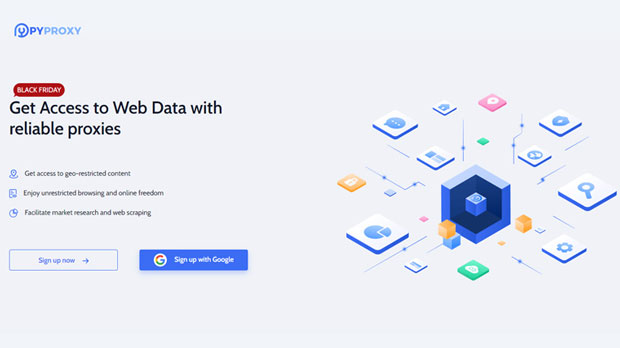In the world of online privacy and data security, proxies are widely used to mask users' real IP addresses, ensuring anonymity, bypassing geographic restrictions, and securing internet connections. Among the different types of proxies, Socks5 and HTTP proxies are two of the most commonly used protocols. While they both serve the purpose of rerouting internet traffic through intermediary servers, they operate differently and have distinct features. This article will explore the differences between Socks5 and HTTP proxies, highlighting their advantages and drawbacks, and will help you decide which one is more suitable for your specific needs. What is a socks5 proxy?Socks5 is the latest version of the Socks (Socket Secure) protocol and is used for routing network packets between a client and a server. socks5 proxies are highly versatile and support a range of internet traffic protocols, including TCP and UDP, making them ideal for a broad spectrum of use cases. They function at a lower level, allowing them to support any kind of internet activity, such as web browsing, file transfers, and even streaming.One of the most significant features of Socks5 proxies is that they don't alter or filter the data sent through them. This makes them much more flexible and capable of handling complex protocols like peer-to-peer (P2P) networking, VoIP (Voice over IP), and online gaming. Another important advantage is that Socks5 proxies provide enhanced security features, including authentication, ensuring that only authorized users can access the proxy server.What is an HTTP Proxy?An HTTP proxy, on the other hand, operates at a higher level in the OSI model and only supports HTTP (Hypertext Transfer Protocol) traffic. This means that HTTP proxies are primarily used for web browsing and are not suited for handling non-HTTP traffic, such as file downloads, online gaming, or VoIP calls. The HTTP proxy functions by intercepting and forwarding HTTP requests made by the user, thereby masking the user's real IP address and improving anonymity during web browsing sessions.One key feature of HTTP proxies is that they are generally faster and more efficient than Socks5 proxies for web traffic because they are optimized specifically for this type of data. However, they are less flexible than Socks5 proxies and may struggle with applications that use different protocols or require more complex network operations.Key Differences Between Socks5 Proxy and HTTP Proxy1. Protocol Support: - Socks5 Proxy: Supports a wide range of protocols, including HTTP, FTP, SMTP, POP3, and more. This makes it suitable for various use cases like browsing, file transfers, online gaming, and P2P networking. - HTTP Proxy: Supports only HTTP traffic, which limits its use primarily to web browsing and HTTP-based applications.2. Performance: - Socks5 Proxy: Although Socks5 proxies support multiple protocols, they can be slightly slower than HTTP proxies because they do not cache or filter traffic. However, their versatility makes them better suited for complex network activities. - HTTP Proxy: Typically faster for web browsing because it is optimized for HTTP traffic. However, it might struggle with other types of data transfers or applications.3. Security: - Socks5 Proxy: Provides more robust security options, including encryption and authentication, ensuring better privacy and protection from hackers or malicious actors. - HTTP Proxy: While it can provide basic anonymity and privacy, it lacks the advanced security features found in Socks5 proxies, such as encryption and authentication.4. Use Cases: - Socks5 Proxy: Ideal for users who require a more versatile solution that supports multiple types of internet traffic, including torrents, P2P, and VoIP calls. It is also favored for its anonymity and security features. - HTTP Proxy: Best for users who primarily need a simple solution for web browsing, especially in situations where performance and speed are prioritized over versatility.Advantages of Socks5 Proxy1. Versatility: Socks5 proxies can handle a wide variety of protocols, from basic web traffic to more complex services like P2P file sharing or online gaming. 2. Enhanced Security: Socks5 provides robust security features such as encryption and user authentication, making it a more secure choice for online activities that require heightened privacy.3. Anonymity: The Socks5 protocol hides your real IP address and does not disclose any identifiable information about your activities, offering better anonymity compared to HTTP proxies.4. Bypassing Geo-restrictions: Since Socks5 proxies support many types of traffic, they can help bypass geographic restrictions not only for web browsing but also for services like video streaming, VoIP, or gaming.Advantages of HTTP Proxy1. Speed: HTTP proxies are optimized for web traffic, which can result in faster speeds for web browsing. They generally offer lower latency than Socks5 proxies for simple browsing tasks.2. Ease of Use: HTTP proxies are simple to set up and use. They require minimal configuration and are ideal for users who need an uncomplicated solution for web browsing.3. Efficiency for Specific Tasks: For basic web browsing, HTTP proxies are often the most efficient choice because they don't need to process the overhead associated with more complex protocols.4. Cost-Effective: HTTP proxies are typically more affordable and easier to maintain, making them a good option for users who don't need the broad versatility of Socks5 proxies.Which One is Right for You?When deciding between a Socks5 proxy and an HTTP proxy, the right choice largely depends on your specific needs and how you intend to use the proxy.- If you are primarily interested in browsing the web, bypassing content restrictions, or accessing websites from different regions, an HTTP proxy may be the most straightforward and cost-effective option. It offers speed and simplicity, ideal for day-to-day browsing tasks. - On the other hand, if you need a proxy for more complex activities, such as file sharing, streaming, or online gaming, or if privacy and security are a top concern, then a Socks5 proxy would be a better fit. The versatility and enhanced security of Socks5 proxies make them the preferred choice for users who require a broader range of capabilities.ConclusionIn conclusion, Socks5 and HTTP proxies each have their strengths and weaknesses. Socks5 proxies are highly versatile and secure, making them suitable for a wide range of activities beyond just web browsing, while HTTP proxies excel at providing fast and efficient service for simple web browsing tasks. The decision on which one to use depends on the specific requirements of the user, including the type of internet activities, the need for security, and the desired performance.
Dec 30, 2024






















































